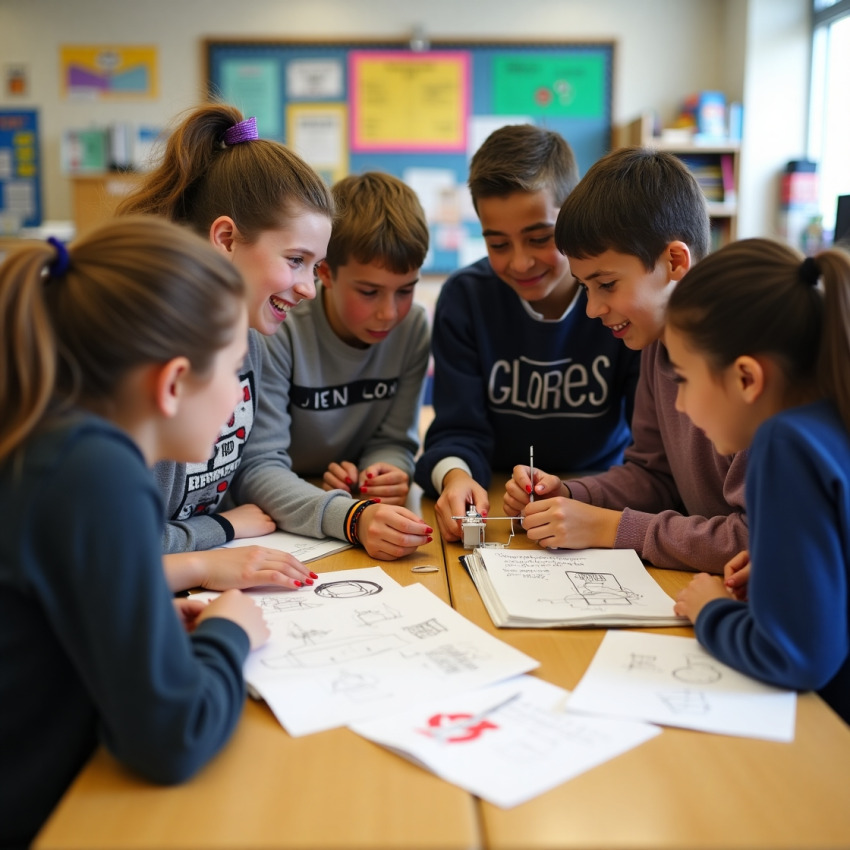Unlock Success: Why Creativity and Problem-Solving Are Essential for Every K-12 Student!
Unlock Success: Why Creativity & Problem-Solving Matter for K-12 Students
Meta Title: Unlock Success: Why Creativity & Problem-Solving Matter for K-12 Students
Meta Description: Discover why creativity and problem-solving skills are essential for every K-12 student. Boost your child's success today!
In today’s rapidly evolving world, creativity and problem-solving have become indispensable skills for every K-12 student. These abilities not only help students excel academically but also prepare them for real-world challenges. From fostering innovation to enhancing critical thinking, these skills lay the foundation for lifelong success. In this article, we’ll explore why creativity and problem-solving are crucial for students and how parents and educators can nurture these skills effectively.
The Importance of Creativity in K-12 Education
What is Creativity and Why Does It Matter?
Creativity is often misunderstood as being limited to artistic endeavors. However, it encompasses much more—thinking outside the box, generating innovative ideas, and approaching problems from unique perspectives. For K-12 students, creativity plays a pivotal role in:
- Encouraging curiosity and exploration.
- Enhancing engagement in classroom activities.
- Developing adaptability in dynamic environments.
According to a study by Forbes, creativity is one of the top three skills employers seek in candidates, making it a vital asset for future success.
How Schools Can Foster Creativity
Educators can promote creativity by incorporating project-based learning, open-ended assignments, and collaborative group activities into their curriculum. Additionally, integrating arts and STEM subjects (STEAM) helps students see connections across disciplines, sparking innovative thinking.
The Role of Problem-Solving Skills in Student Development
Defining Problem-Solving Skills
Problem-solving involves identifying issues, analyzing possible solutions, and implementing effective strategies to resolve them. For K-12 students, mastering this skill set enables them to tackle both academic and personal challenges with confidence.

Benefits of Problem-Solving Skills
| BENEFIT | DESCRIPTION |
|---|---|
| Improved Academic Performance | Helps students approach exams and assignments strategically. |
| Enhanced Decision-Making | Prepares students to make informed choices in life. |
| Increased Resilience | Builds mental strength to overcome obstacles. |
By nurturing problem-solving skills, schools equip students with tools to navigate an unpredictable future.
Bridging Creativity and Problem-Solving for Holistic Growth
The combination of creativity and problem-solving creates a powerful synergy that empowers students to innovate while addressing complex issues. Here’s how they work together:
- Creative Thinking Sparks New Ideas: When students think creatively, they generate novel approaches to problems.
- Problem-Solving Grounds Those Ideas: Once ideas are formed, problem-solving ensures practical implementation.
- Collaboration Amplifies Impact: Group projects allow students to combine diverse perspectives, leading to richer outcomes.
Strategies to Develop Creativity and Problem-Solving Skills
Tips for Parents
Parents play a key role in fostering these skills at home. Some actionable tips include:
- Encouraging open-ended play and exploration.
- Providing opportunities for hands-on learning through DIY projects or science kits.
- Asking thought-provoking questions to stimulate critical thinking.
Tips for Educators
Teachers can create an environment conducive to creativity and problem-solving by:
- Designing lessons that encourage experimentation and risk-taking.
- Offering feedback that focuses on process rather than just results.
- Leveraging technology, such as coding platforms or design software, to enhance learning experiences.
Real-World Applications of Creativity and Problem-Solving
From designing sustainable solutions to tackling global challenges like climate change, creative thinkers and problem solvers are shaping our world. For instance, programs like FIRST Robotics inspire young innovators to apply these skills in engineering and technology fields.
? What We’ve Learned
In conclusion, fostering creativity and problem-solving skills is essential for every K-12 student’s journey toward success. By nurturing these abilities, we prepare students to thrive in academics, careers, and everyday life. Whether you’re a parent, teacher, or policymaker, investing in these skills will yield long-term benefits for individuals and society alike.
Call to Action: Ready to unlock your child’s potential? Explore our resources on creative learning strategies and problem-solving techniques. Share your thoughts in the comments below—we’d love to hear how you’re supporting creativity and innovation in education!
❓? 5Wh Questions
To align with the most frequently searched questions on Google, here are five key "Wh" questions related to creativity and problem-solving in K-12 education. These questions reflect the common concerns and interests of parents, educators, and students alike.
- Why are creativity and problem-solving important for K-12 students?
This is one of the most commonly searched questions because it directly addresses the core benefits of these essential skills. Parents and educators seek to understand how fostering creativity and problem-solving impacts a child’s academic performance, career readiness, and overall personal growth. - What are the best ways to teach creativity and problem-solving to kids?
Many users look for actionable strategies to apply at home or in the classroom. This question focuses on effective methods such as project-based learning, STEAM activities, and hands-on experiments that nurture creative and analytical thinking. - When should children start developing creativity and problem-solving skills?
Timing plays a crucial role in skill development. Parents and teachers often wonder if there is an ideal age to begin fostering these abilities—whether during early childhood, elementary school, or later stages of education. - Where can I find resources to improve creativity and problem-solving in students?
This question reflects the growing demand for tools and platforms that support creative development. Searchers often look for websites, apps, books, and educational programs like Scratch, Tinkercad, or FIRST Robotics that offer engaging, skill-building content. - Who is responsible for teaching creativity and problem-solving skills?
The question of responsibility is a popular and often debated topic in education. People want to know whether parents, teachers, or policymakers bear the main responsibility for nurturing these vital skills in students, making this a highly relevant concern in discussions about student success.

